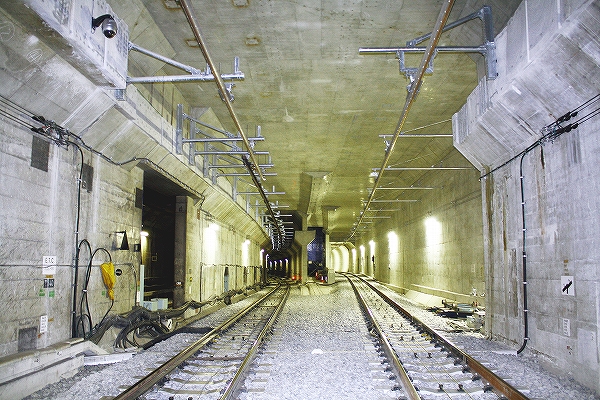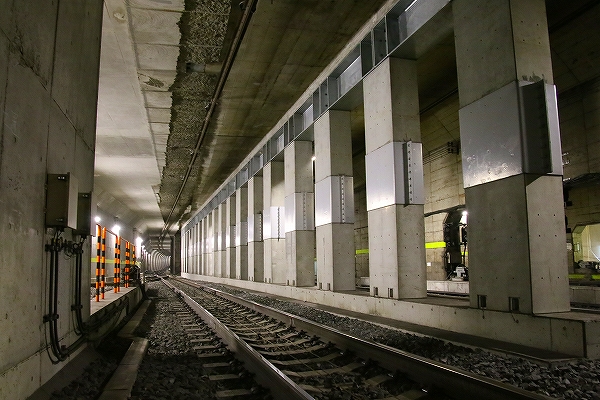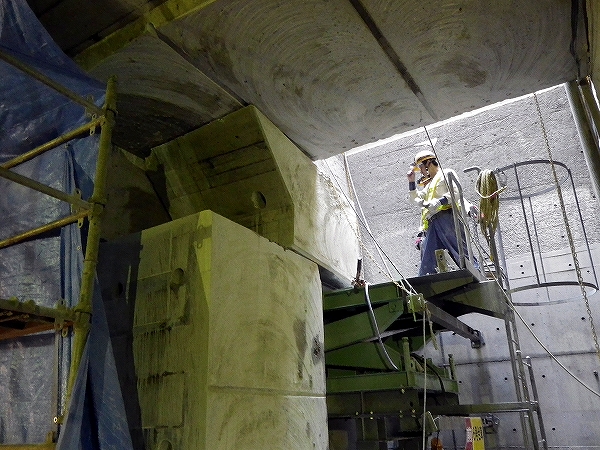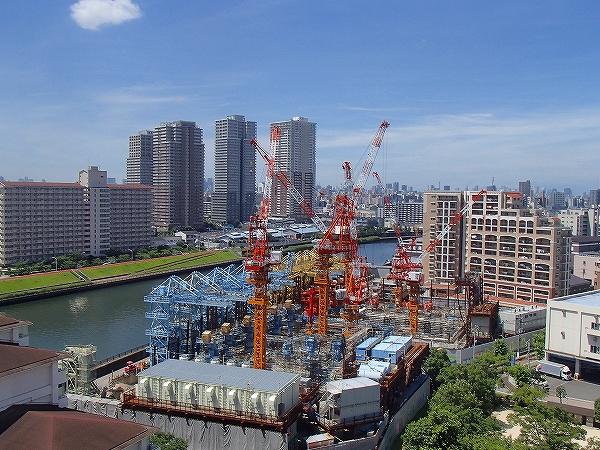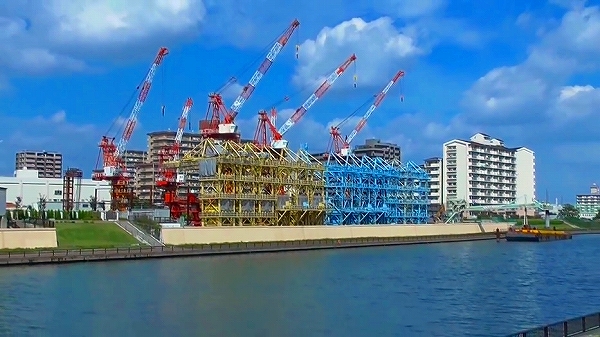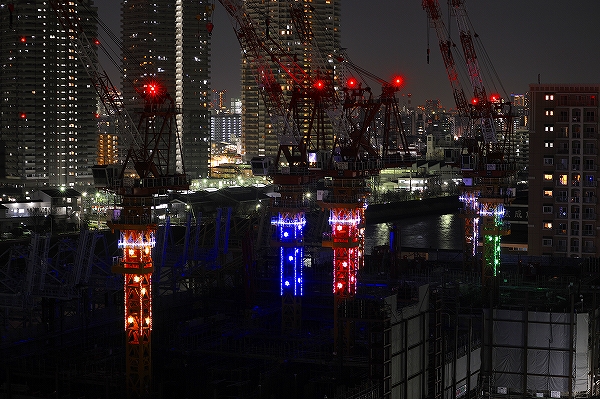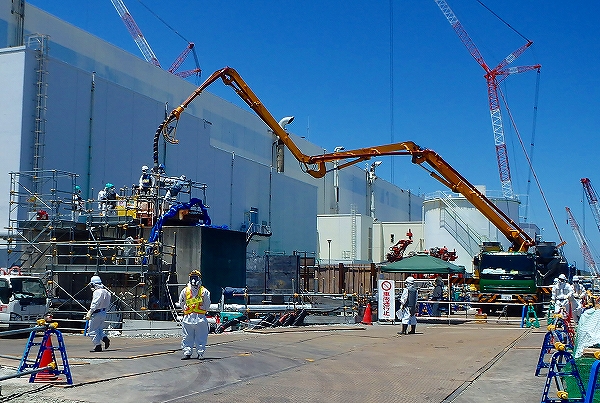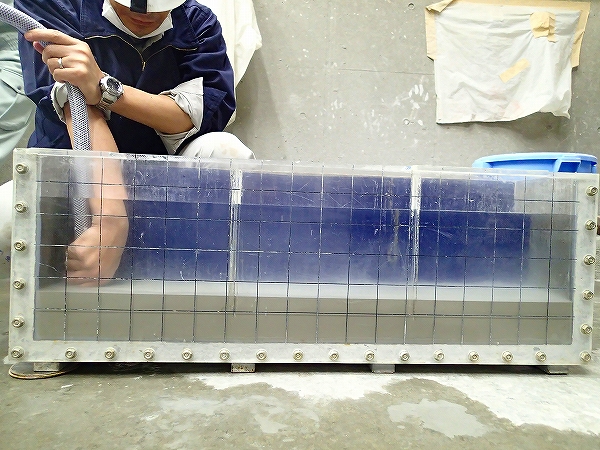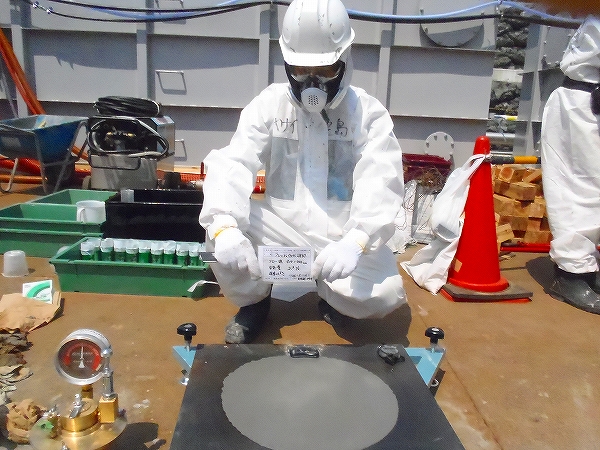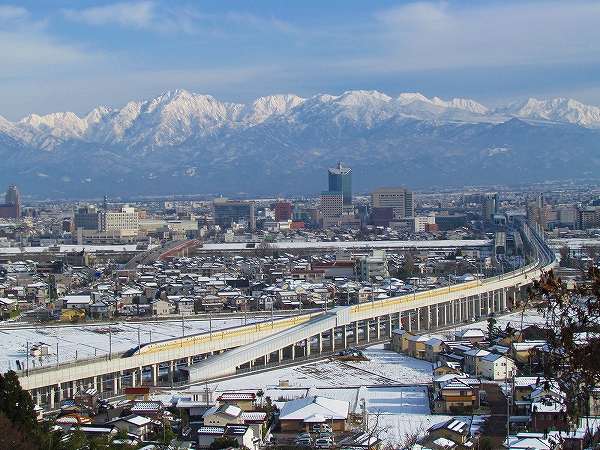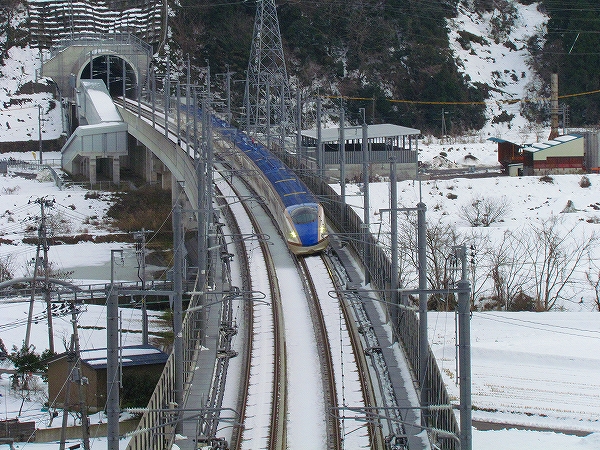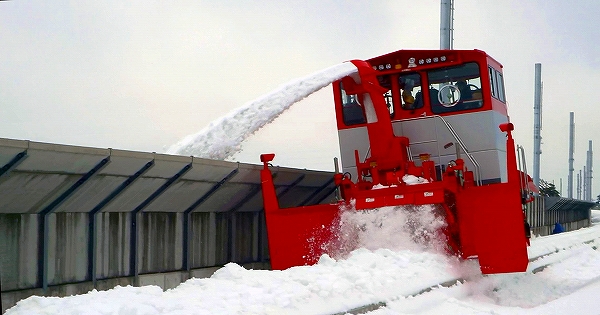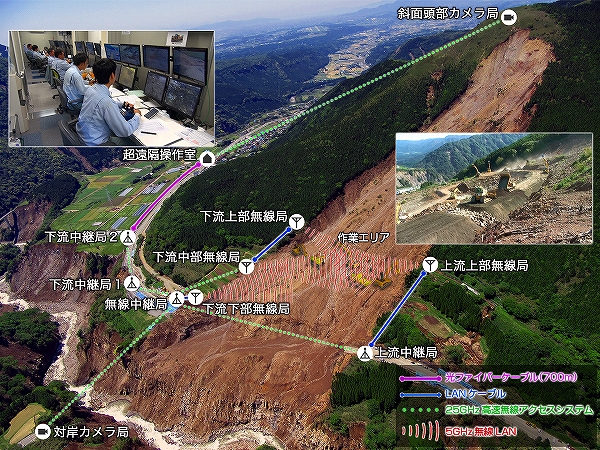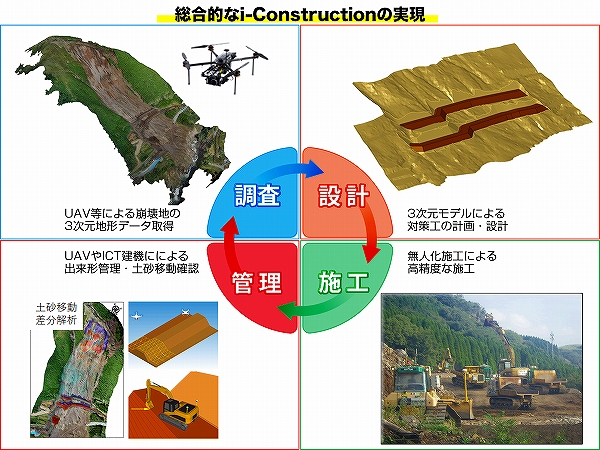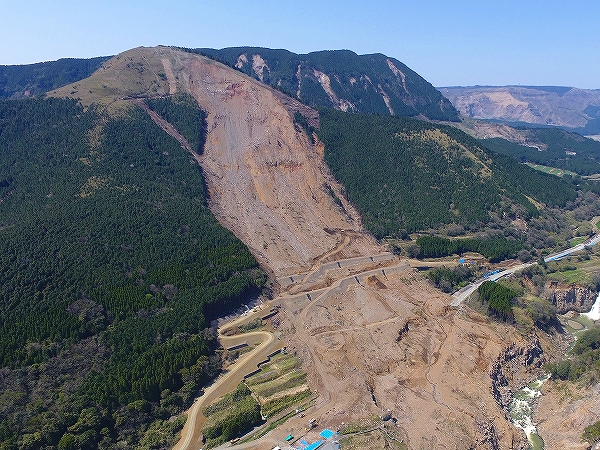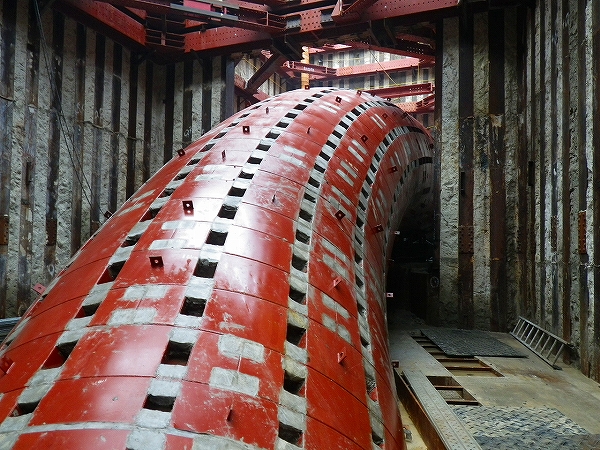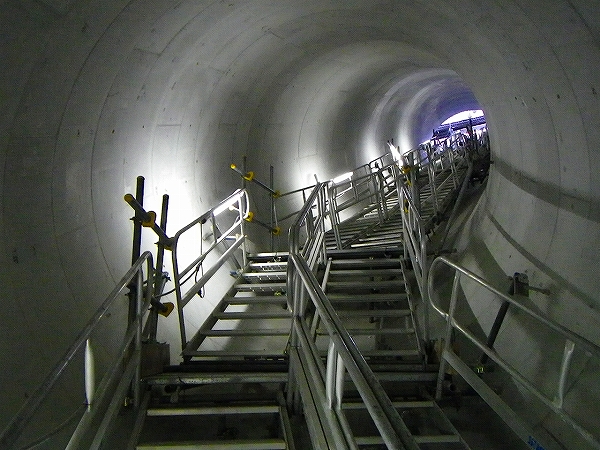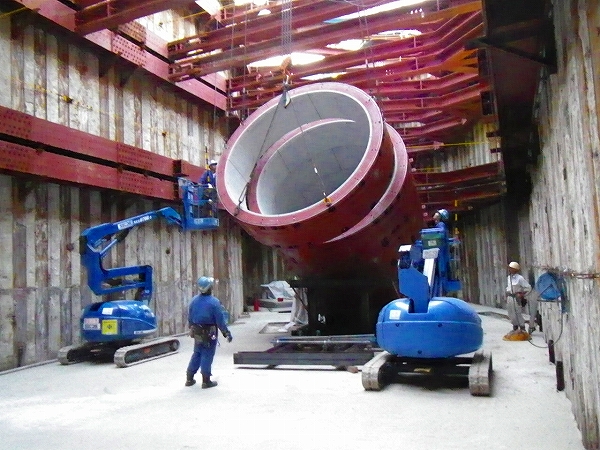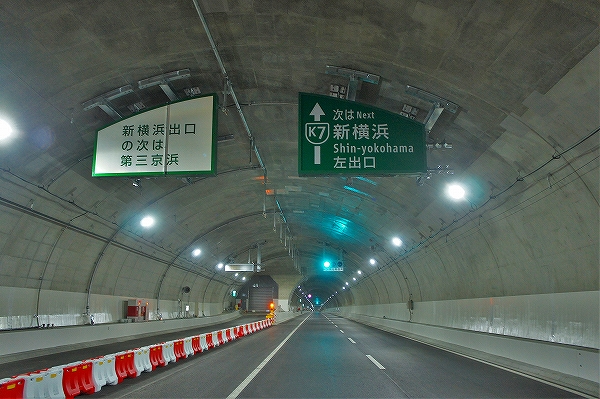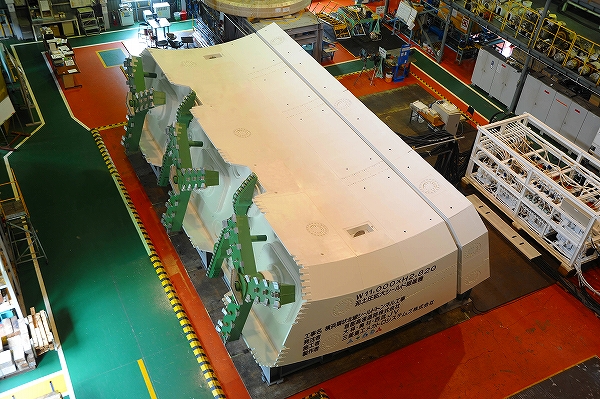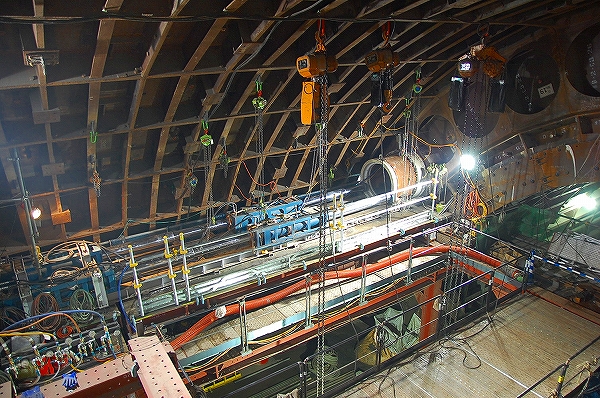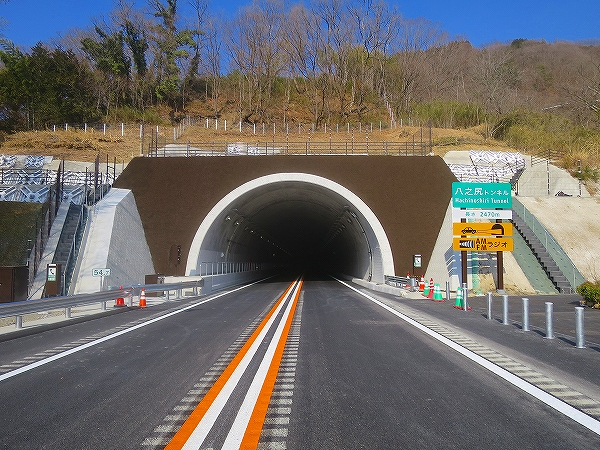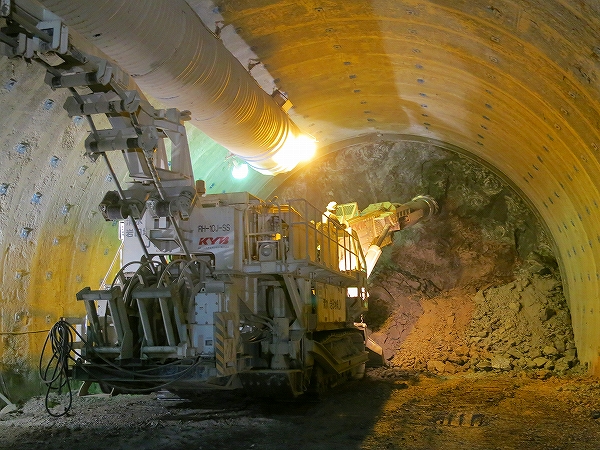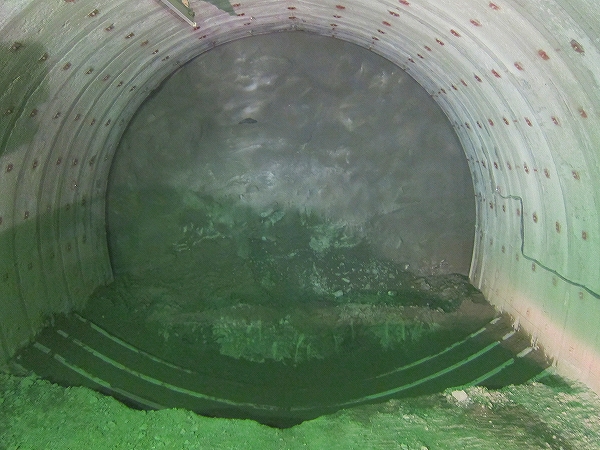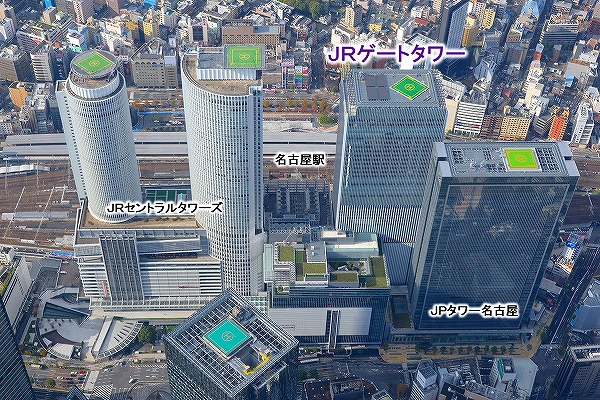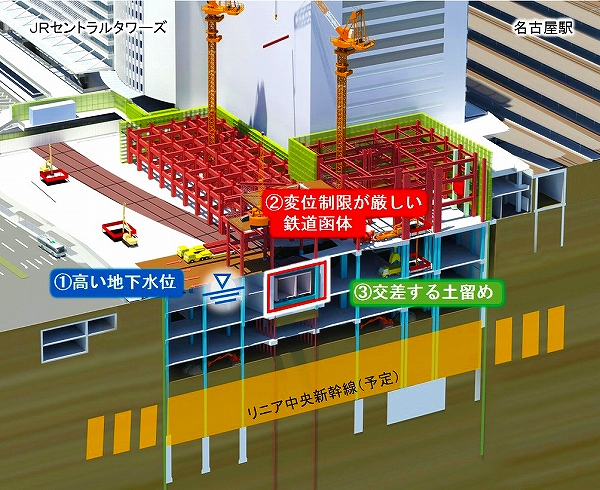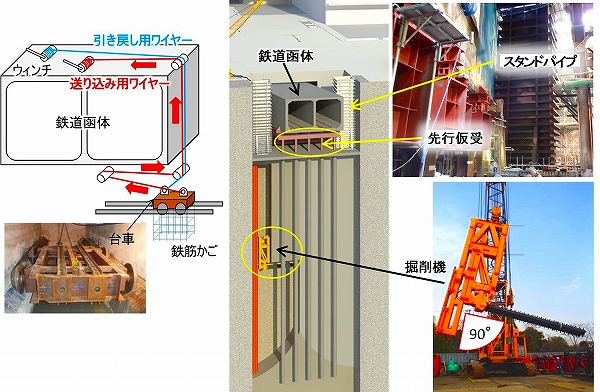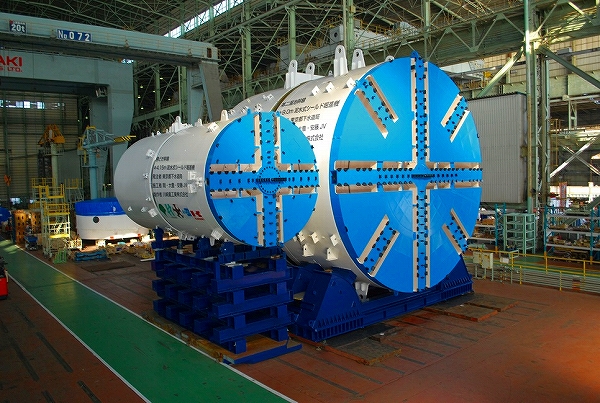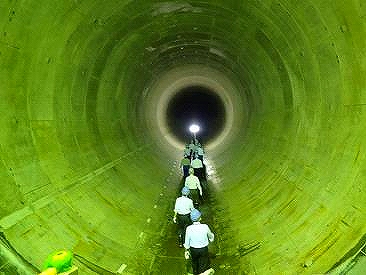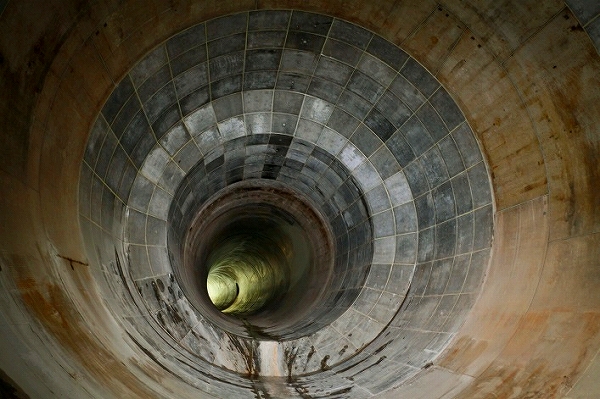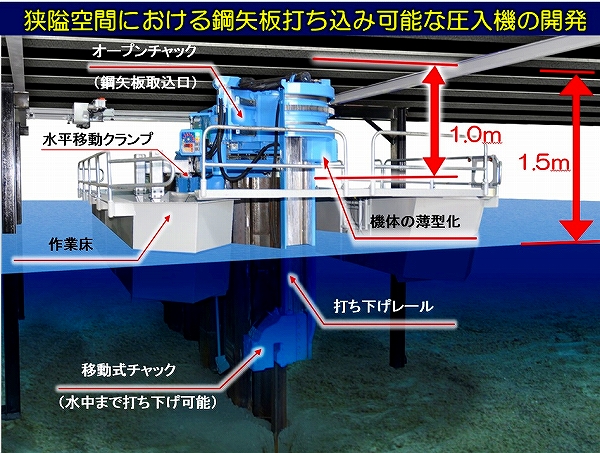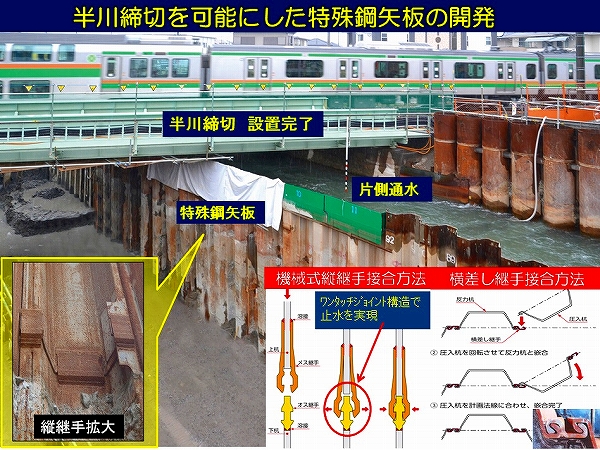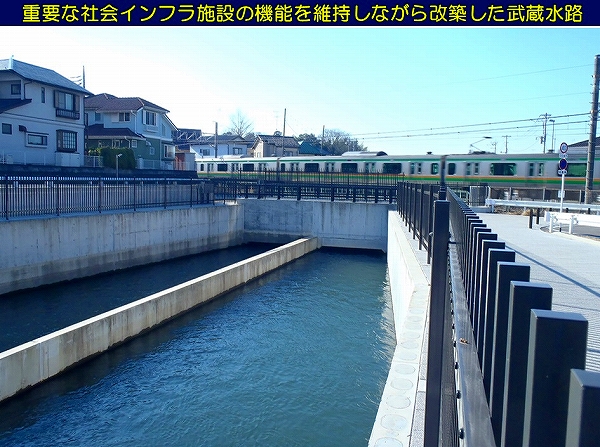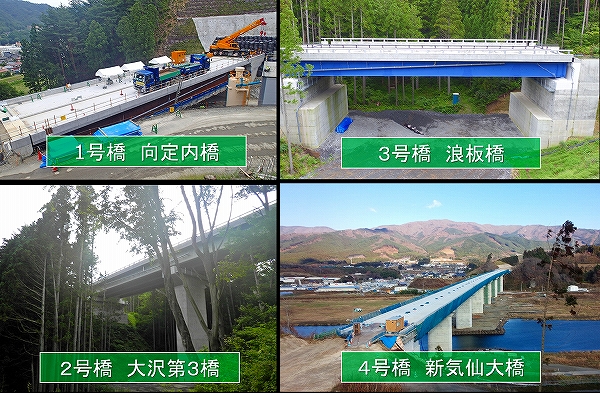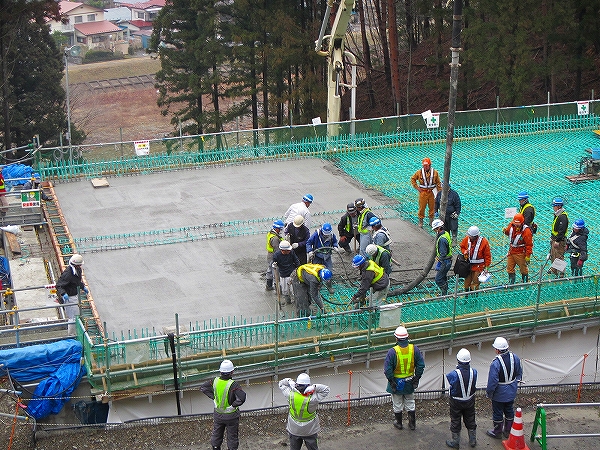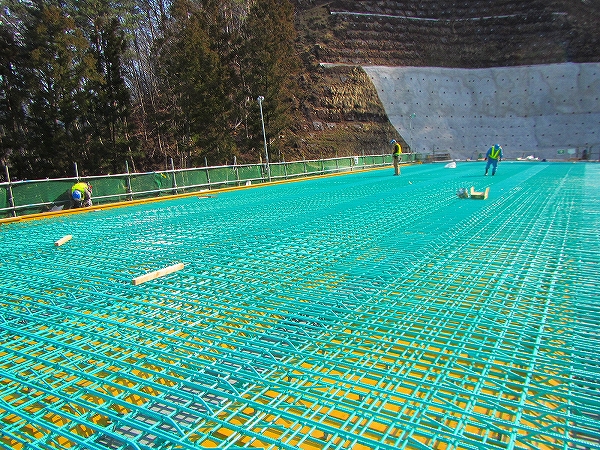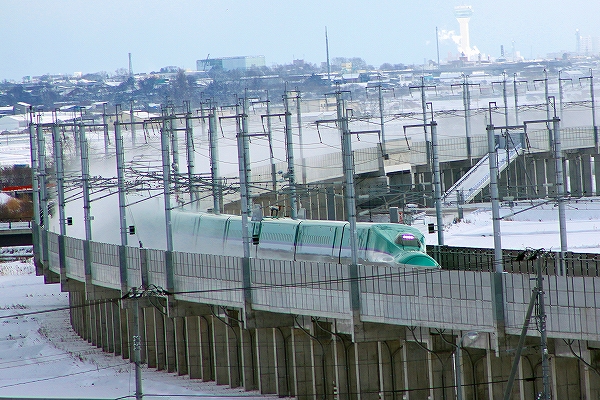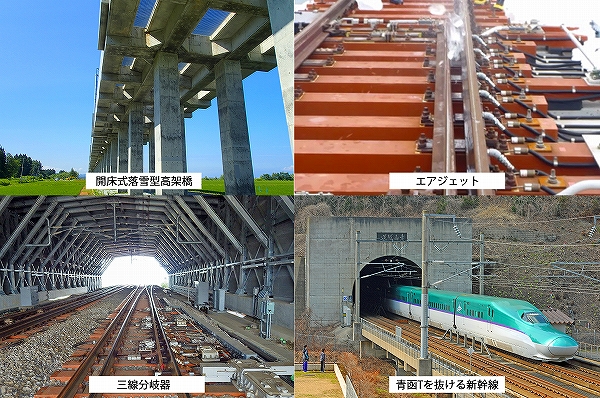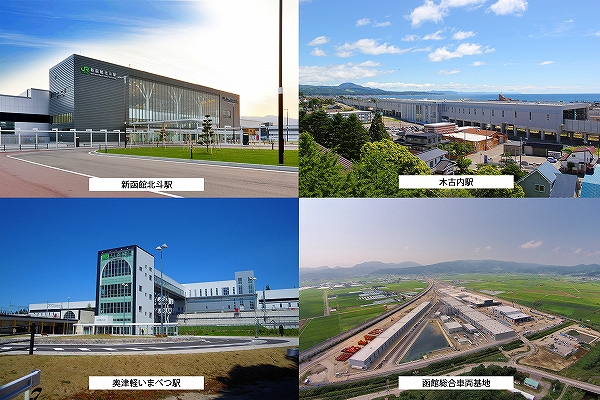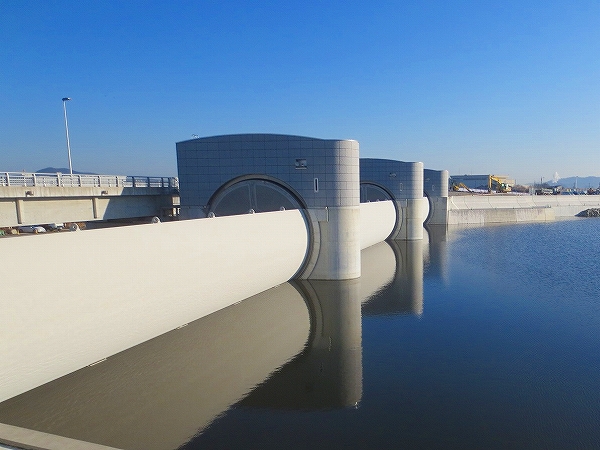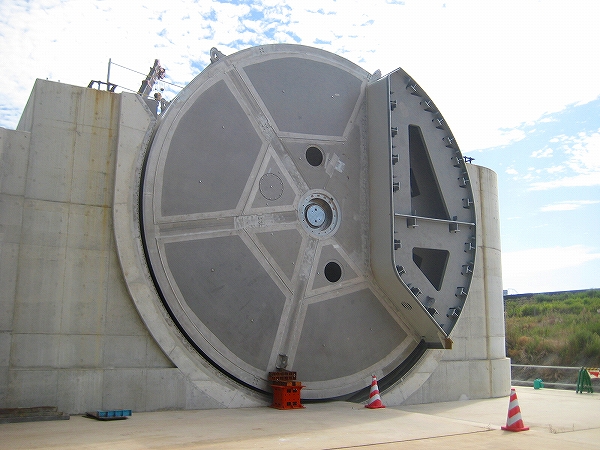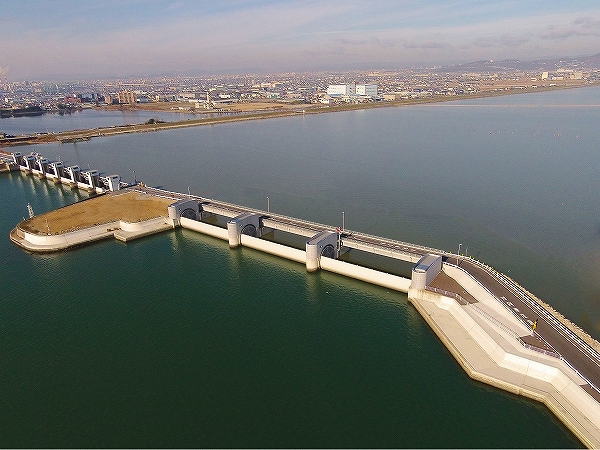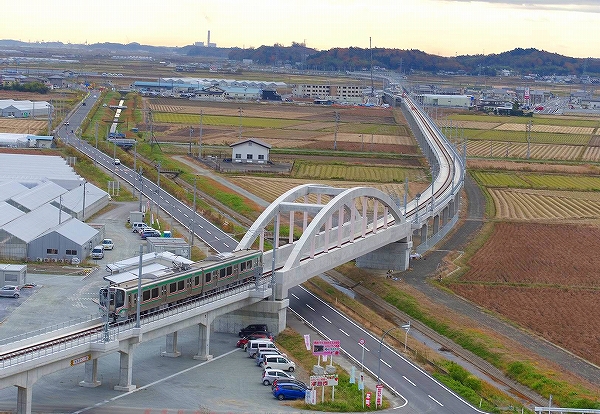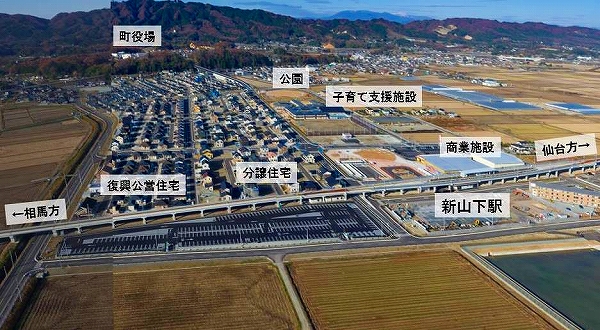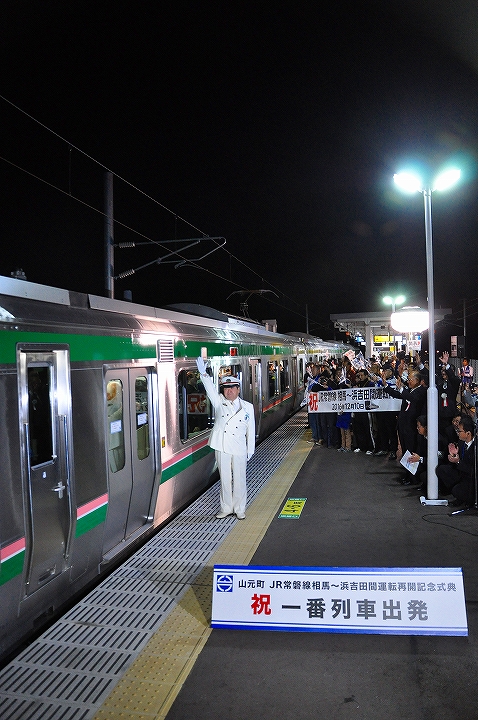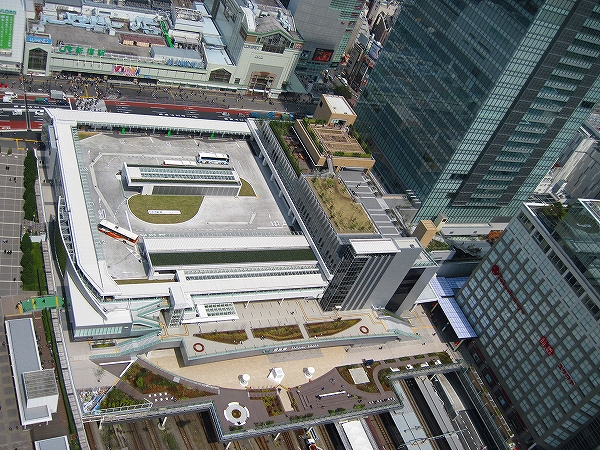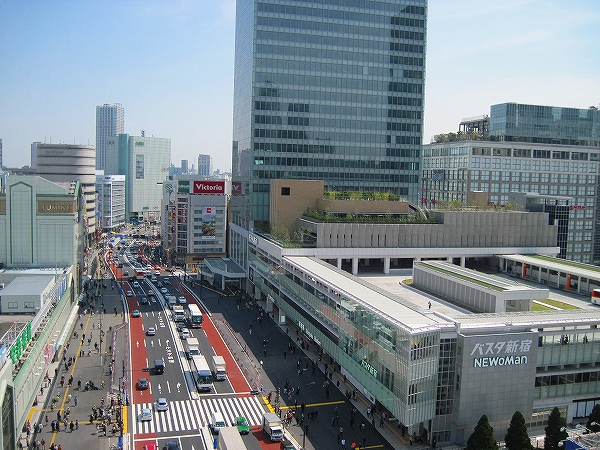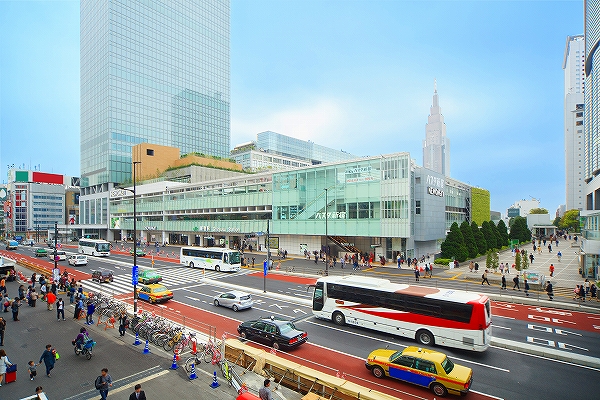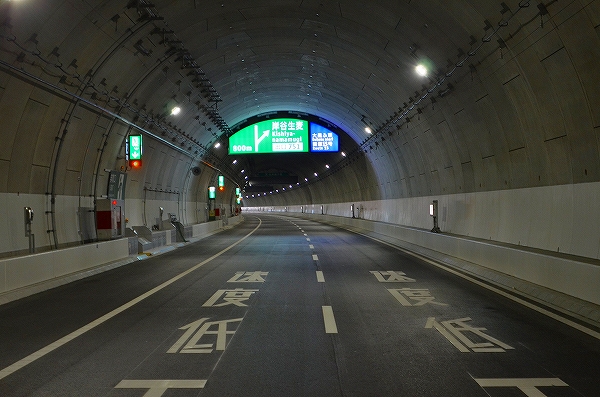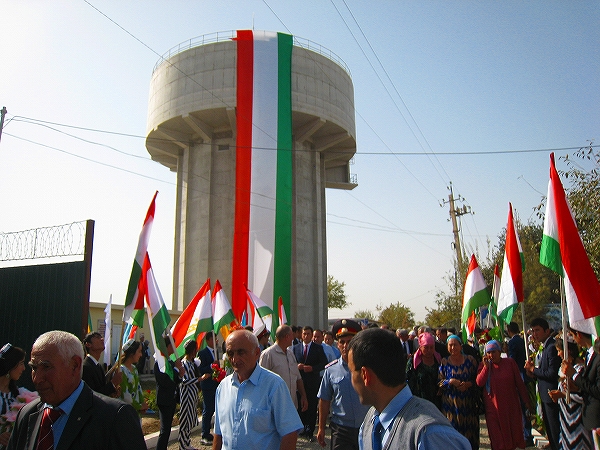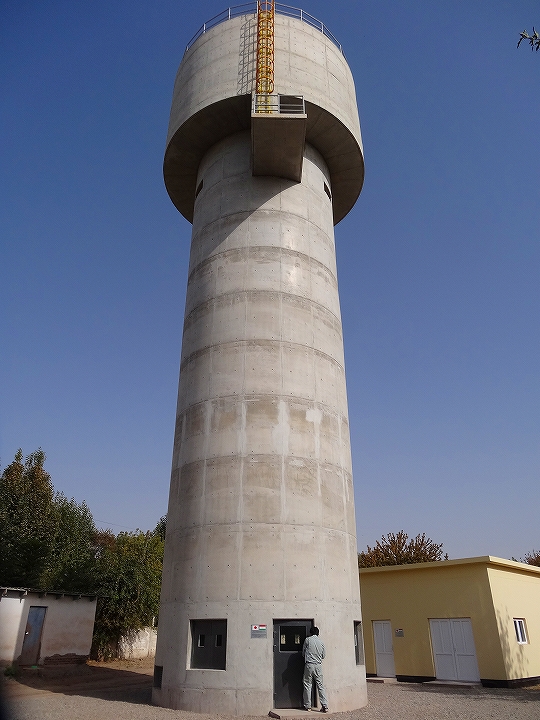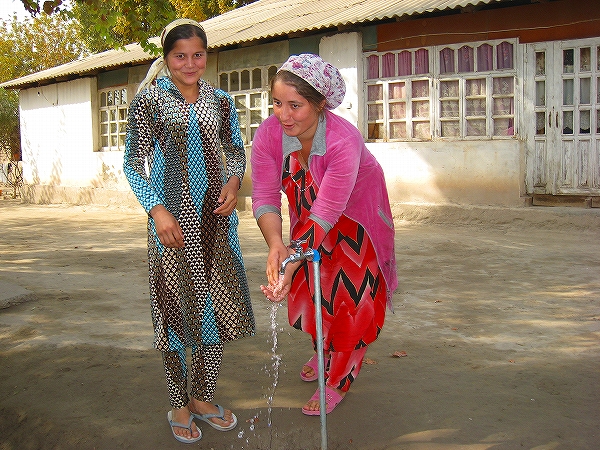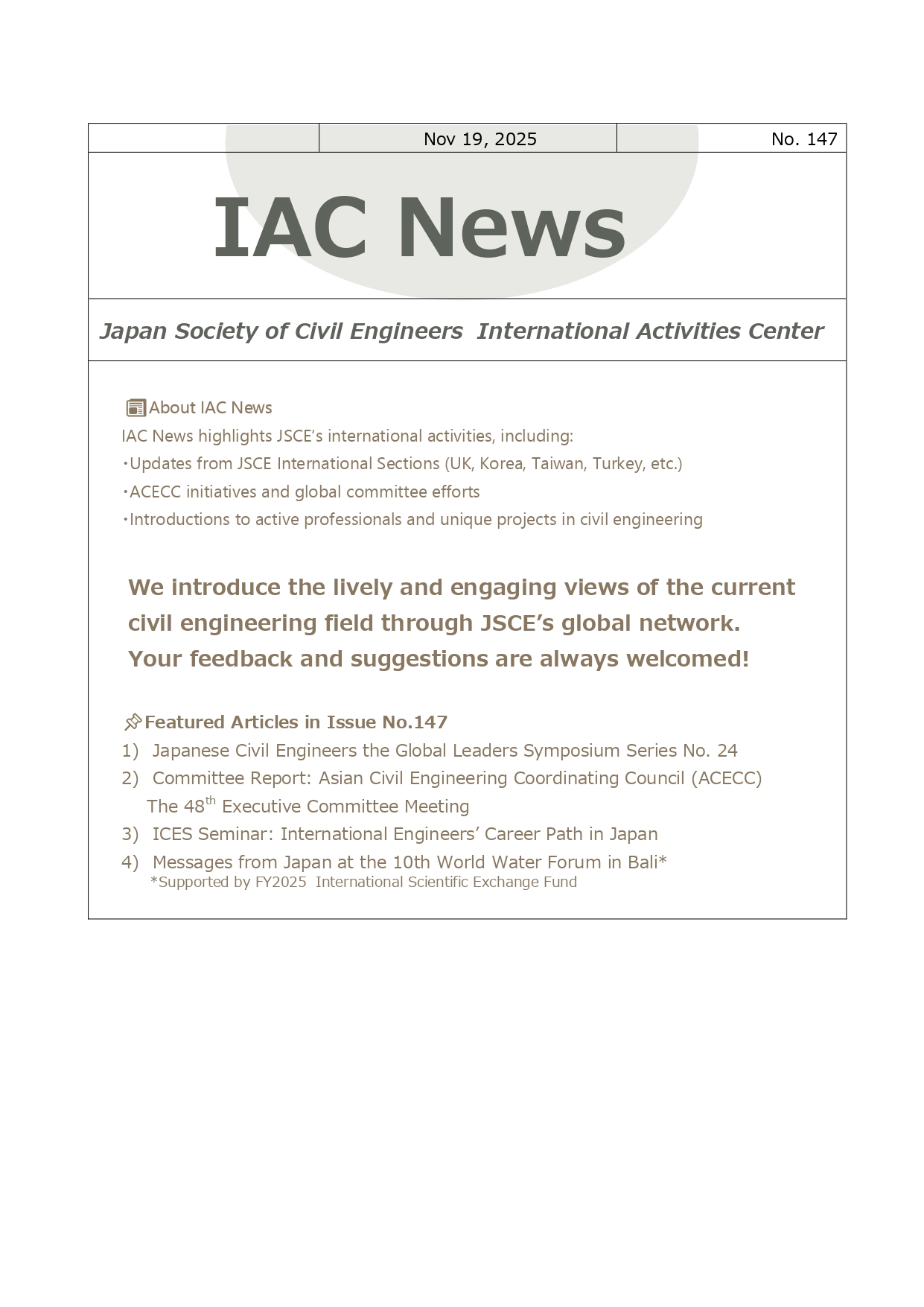2016 Outstanding Civil Engineering Achievement Award
[Group-1]
1. The first project in Japan to remove the level junction of a commercial subway line - Connecting Line Installation Work on the Tokyo Metro Yurakucho Line / Fukutoshin Line Enabling Stable Traffic on 7 Routes -
- Tokyo Metro Co., Ltd.
- Joint Venture Construction of Sato Kogyo Co.,Ltd. & Kumagai Gumi Co., Ltd. & Dai Nippon Construction
- Joint Venture Construction of Kumagai Gumi Co., Ltd. & Sato Kogyo Co.,Ltd. & Dai Nippon Construction
- Joint Venture Construction of Shimizu Corp.& Maeda Corp.
This project solved the train delay originating from the level junction between Kotake-mukaihara station and Senkawa station, caused by the 2008 opening of the Fukutoshin line, by establishing a “connection line”. Completion of the connection line was required by the 2013 start of mutual direct operation with the Tokyu Toyoko Line. Since it was necessary to shorten the work process by about half a year, technology development and ingenuity were utilized to achieve both a shortening of construction time and safe, environmentally friendly construction, realizing a high degree of convenience and stable operation on 7 routes operated by 5 companies.
2. The Construction of Two Huge Pump Plant by Pneumatic Cason Construction Method - “Senju Sekiya” Pump Plant Project, Tokyo, Japan -
- Bureau of Sewerage, Tokyo Metropolitan Government
- Obayashi and Omoto Construction Joint Venture
Senju Sekiya pump plant is a facility which is designed to control the increasing flood due to local heavy rain and to discharge rainwater into the Sumida River after temporary retention.
Our challenge is the world's first construction to install two huge caissons at the same time to over 50m below the surface with 2.0m space. We performed both shortening the construction period and preserving environmental requirement with consideration for high-density residential area.
Against the various difficult problems peculiar to a large caisson including dilatancy phenomenon of the ground, this project is successfully completed by utilizing the high level analysis based on various data of real-time measurement.
3. Removal Works of Contaminated Water at Fukushima Daiichi Nuclear Power Station (Closure of Seawater Piping Trenches and Screen Pumping Rooms)
- Tokyo Electric Power Company Holdings, Inc.
- Kajima Corporation
In Fukushima Daiichi Nuclear Power Station where damaged by the 311 Tsunami disaster, there was a great concern regarding expansion of contaminated areas due to inflow/stagnation of highly contaminated water in seawater piping trenches. A countermeasure, developing special filling material flowing up to 85 m in water to densely fill trenches without material segregations, eliminating risks of outflowing of contaminated water to the sea, was implemented immediately to close the trenches and screen pumping rooms and succeeded in a short period of time. As a result, it greatly contributed to keep radiation dose of workers to minimum and prevent expansion of radioactive contamination at the site.
4. Establishment of snow damage measures to show the biggest effect with minimum infrastructure - The Hokuriku Shinkansen, Toyama, the Ishikawa prefecture -
- Japan Railway Construction
- Transport and Technology Agency(JRTT)
The area with rare heavy snow and heavy snowfall along Hokuriku Shinkansen, the method was established with five types of newly designed snow storage viaducts and a snowplow car. It achieved to reduce construction cost and developed countermeasures against snow damage with low energy consumption.
After the opening of business, train services have kept normal without a transportation disorder caused by the snow damage.
The establishment of method was highly regarded with its contribution to the development of the civil engineering technology, as well as to the development of society and economy.
5. Urgent disaster countermeasure by comprehensive i-Construction system based on advanced unmanned construction technology - Slope protection construction at Aso Ohashi Bridge Area (direct emergency sabo project) -
- Ministry of Land,Infrastructure,Transport and Tourism Kyushu Regional Development Bureau
- KUMAGAI GUMI CO.,LTD
As the Kumamoto earthquake triggered numerous landslides, urgent construction works such as removal of unstable earth and installation of earth-retaining embankments are required to prevent secondary disaster.
For this purpose, the network style full-unmanned construction system was introduced for maximizing operability and efficiency of the construction works. On those bases, the i-Construction with 3 dimensional models was comprehensively incorporated during investigation, design and construction phases of the project. Finally swift and agile management process was achieved and the project completed safely and quickly. Those project management technologies will make notable contribution to the civil engineering progress.
6. Construction of 3-D composite curve shaped pipe-culvert by aerial assembly of “concrete filled steel segments with external bolt tightening type” - Construction work of discharge culverts at Kobe Nakatottei pump station -
- Construction Bureau, Kobe City
- Taisei Corp.
This project is executed as part of the anti-inundation measures business of the Sannomiya, Kobe-City south district. Nakatottei pumping station is maintained and a large sectional effluent pipe that drains a large quantity of rainwater into Kobe Port is under construction. In the launching and arrival shafts, 3-D composite curve shaped pipe-culvert with a large height difference (H=20m) and a sharp curve (R=18m) was planned.
On behalf of difficult cast-in-place RC structure, we adopted an alternative method to construct this complex discharge culvert by using aerial assembly of newly developed “concrete filled steel segments with external bolt tightening type”. Finally we could successfully design and construct a complexly shaped culvert connection.
As a result, we addressed a functionally necessary point and could realize labor-saving, high-quality, reduction of construction period. This project was a pioneering work that achieved “i-Construction”, by improving productivity and safety.
7. New Construction Method of the Shield Tunnel Widening - Baba Ramps of Metropolitan Expressway Yokohama North Line -
- Metropolitan Expressway Co., Ltd.
- Obayashi・Okumura・Seibu Joint Venture
The 5.5km twin shield tunnel project is a part of the Metropolitan Expressway Yokohama North Line (8.2km), and Baba ramps are located in the middle of the entire route. In this project, the shield tunnel was constructed under a residential area. 4 ramp structures were planned to cavern from shield tunnel under high ground water condition with large overburden.
It was the first challenge to build in such situation and it was necessary to use the safer and more reliable method. Therefore the combination of techniques, Enlargement Shield Tunnel and Steel pipe-thrusting, has been adapted to minimize the ground settlement. As a result, this project has been completed successfully.
8. Hachinoshiri Tunnel Project, Chubu Odan Expressway: Challenges of tunnel full face mechanical excavation and immediate ring closure method in weak rock
- Central Nippon Expressway Co., Ltd., Tokyo branch, South Alps Project Office
- Shimizu Corp. and Iwata Chizaki Inc. Joint Venture
Hachinoshiri Tunnel is a 2469m long road tunnel with geology consisting mainly of highly weathered mudstone and during excavation severe rock squeezing was encountered at almost 20% of the whole tunnel length.
Curved tunnel face method was adopted to improve the stand-up time of tunnel face and big scale roadheader was used so that full face excavation and early ring closure method can be implemented.
3D auto measurement system was carried out to monitor the displacement of curved tunnel face and newly developed “New ventilation system” was also introduced to effectively removed the dust in the tunnel.
9. Underpinning of underground structure for railway in service, and construction of diaphragm walls by applying undermining method for construction of skyscraper (Construction of JR GATE TOWER which becomes a part of station for the Linear Chuo Shinkansen)
- Central Japan Railway Company
- Taisei - Kajima Joint Venture
Construction of JR GATE TOWER (height: 220m, underground depth: 35m) needed a number of advanced technologies in order to include the existing underground railway structure into the new construction.
They are 1) deep chemical grouting to secure the stability and safety of the existing structure, 2) long-term accurate observation against settlement and rebound due to the weight of the building, and 3) construction of deep diaphragm walls under the existing structure by applying a newly improved undermining machine.
These high technologies contributed to the construction of a part of the Linear Chuo Shinkansen as well as the intensive use of underground space.
10. The construction of Dai-Ni Tameike Trunk Sewer contributing to mitigation of damage caused by inundation in the central area of the capital and water quality improvement of the Imperial Palace inner moat
- Tokyo Metropolitan Government Bureau of Sewerage,
Construction division
2nd Core Facilities Reconstruction office
Chubu Sewerage office
Dai-Ni Tameike Trunk Sewer project is one of the most important projects undertaken by the Tokyo Metropolitan Government Bureau of Sewerage, which installed the trunk sewer measuring 4.5km in length with a maximum diameter of 8.0m. The project had been carrying out for 25 years to mitigate damage caused by inundation in the central area of the city, also to improve water quality at the Imperial Palace inner moat. In order to cope with the restriction of the field and other daunting conditions while attaining the cost reduction and construction efficiencies, the advanced technologies such as, the Binary Branch-Type Shield Method, shield docking by the Ground Freezing Method, and installing of the main branch sewer by the Tunnel-Launching Shield Method were introduced.
11. Developing new sheet pile press-in technology enabling to place from the floating yard with narrow space under the railway bridge
- Japan Water Agency
- East Japan Railway Company
- TOTETSU KOGYO CO.,LTD.
- GIKEN LTD.
Musashi canal, the key infrastructure providing one third volume of domestic water in Tokyo metropolitan region, was rehabilitated and upgraded without interruption of its service. For this project, the steel sheet pile press-in technology was developed with new multifunctional machine and improved sheet pile, which enables to work from the floating yard with the narrow space at the intersection of canal and railway bridge, which has 1.5m clearance. It is expected that this innovative technology based on integration of unique ideas and high technical capabilities will contribute upcoming infrastructure rehabilitation projects.
12. Construction of durable RC decks in Tohoku area
- Tohoku regional bureau, Ministry of land, infrastructure, transport and tourism
- Obayashi Corp.
- IHI Construction Service Co.,Ltd
- Mitsui Zosen Steel Structures Engineering Co.,Ltd
- Yokogawa Bridge Corp.
- The University of Tokyo
- Nihon University
- Yokohama National University
- Maebashi Institute of Technology
RC decks in Tohoku area where this project was carried out have problem in the durability against frost damage, chloride attack and alkali silica reaction. To develop countermeasures within the limited construction period, industry-government-academia group was established. In this project, fly ash and blast furnace slag were used as countermeasures against chloride attack and alkali silica reaction. Moreover, a few more countermeasures were also applied to make multiple defense network against every assumed deterioration. Quality of casted concrete was verified by element tests and NDTs after construction. This project is commended as Outstanding Civil Engineering Achievement Award for the contribution to the life cycle management of road bridges.
[Group-2]
1. Opening of Hokkaido Shinkansen (Shin-Aomori – Shin-Hakodatehokuto) - New era of high-speed railway, 28 years from opening of Tsugaru Straits Line -
- Japan Railway Construction, Transport and Technology Agency - Hokkaido Shinkansen Construction Bureau, Aomori Construction Bureau
- Hokkaido Railway Co.
- East Japan Railway Co. - Tohoku Construction Office
The Hokkaido Shinkansen (Shin-Aomori – Shin-Hakodatehokuto) was opened on March 26, 2016. The purpose of this project is to reduce travel time between Honshu and Hokkaido, and revitalize the regional cooperation.
In this construction, the existing facility of Tsugaru straits line including Seikan-Tunnel was utilized. This project introduced new technologies to run conventional line and high speed line together, and adapt a harsh winter environment.
The project was highly evaluated for those technologies to operate Shinkansen stably and safely in high-speed, and its contribution to the development of local communities.
2. Floodgate extension works in the mouth of Hyakken River (Adopting the “rising sector gate” in the largest scale in Japan to unify flood control, historic preservation, and environmental conservation)
- Okayama River Management Office, Chugoku Regional Development Bureau,
Ministry of Land, Infrastructure, Transport and Tourism
Aiming at doubling its capacity to carry flood flows in the mouth of Hyakken River, the floodgates extension works adjacent to the old floodgates were started in 2001 and were completed in 2016. The new continuous three floodgates in conjunction with the old one can flow the designed 150-year flood safely.
Adopting “rising sector gate”, which open and close by its rotation, famously used for the Thames Barrier in UK, lowering its height and improving earthquake-resistance are both obtained. Each floodgate is the longest span (33.4m) and the heaviest (350t) in Japan.
The floodgate’s structure was designed in harmony with the surrounding environment and landscape.
3. Restoration of inland relocation between JR Joban Line Komagamine and Hamayoshida damaged by the Great East Japan Earthquake
- East Japan Railway Company
- Miyagi Prefectural Government
- Fukushima Prefectural Government
- Yamamoto Town Office
- Shinchi Town Office
Joban Line between Komagamine and Hamayoshida Station suffered destroying damage by the Great Japan Earthquake. Therefore, the Railway Routes were relocated inland for about 14.6 km including Shinchi, Sakamoto and Yamashita Station according to the community planning.
It was set to only 3 years by devising it for early realization from route selection to construction start. After human support and system reinforcement of establishment of a professional department and outside the company were done in the JR inside of the company, site acquisition acquired more than 90 percent for about 1 year. A new technology was used by a plan of a structure.
I did area contribution of a match as a rehabilitation model case of an area autonomous body and JR East.
4. Shinjuku Terminal South Gate Area Infrastructure Development Project
- Tokyo National Highway Office, Kanto Regional Development Bureau,
Ministry of Land, Infrastructure, Transport and Tourism - East Japan Railway Co., Tokyo Construction Office
Shinjuku Terminal South Gate Area had some problems, aging of a railway-overpassing bridge, limited walking space and inconvenience of dispersed highway bus stops nearby. So this project worked on “Re-building of the overpassing bridge” and “Improvement of a transport terminal” to cope with the above problems.
In the project, an artificial ground was erected over the railway and the roads and railway facilities have been incorporated in a building constructed on the ground. Then the project has realized improvement of the transport terminal that has combined functions of the road and the building with railway station at Shinjuku terminal, which is the largest railway terminal in Japan.
5. Construction of Metropolitan Expressway Route 7 (Yokohama North Line) - The Urban Expressway Regarded the Preservation of Surrounding Environment -
- Metropolitan Expressway Co., Ltd.
In Yokohama North Line, total 8.2km expressway, approximately 70 percent (5.9km) of the route was constructed underground in order to minimize relocation of residential buildings and environmental impact. In tunnel section, large diameter shield tunnels (length: 5.5km) were constructed underneath residential area. In viaduct section, environmental impact has been reduced by rationalizing the road plan as well as shorten the total length of junction, and minimize the oppression by devising the color and shape of structures.
Preservation of surrounding environment was regarded and various kind of construction methods were applied in this project. Accordingly, it contributed remarkably to the improvement of construction techniques on urban expressway.
6. The Project for Rehabilitation of Drinking Water Supply Systems in Pyanj District, Khatlon Region, the Republic of Tajikistan
- Embassy of Japan in Tajikistan
- Japan Cooperation International Agency
- State Unitary Enterprise
- Dai Nippon Construction
- Eight-Japan Engineering Consultants Inc.
Only 27% of the residents in the Project area had access to water services, which made it imperative for the water supply to be improved.
By newly constructing two elevated water tanks (1,800m3, 250m3), six boreholes and distribution of pipelines (approx.95km), the Project has brought 24 hour access to clean water to all the residents (29,000 people) within the Project area.
The above elevated water tank of 1,800m3, which has become the largest in Central Asia, has been highly evaluated as a token of friendship between Tajikistan and Japan by the Government of Tajikistan.

